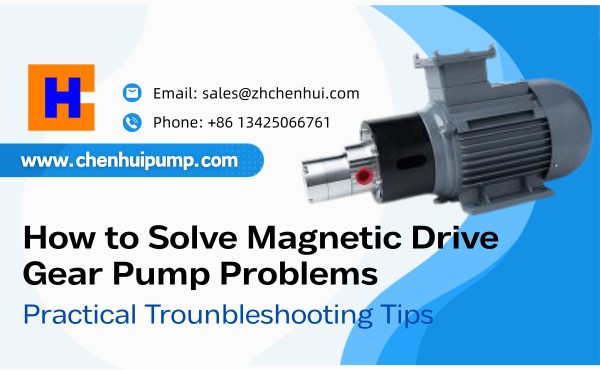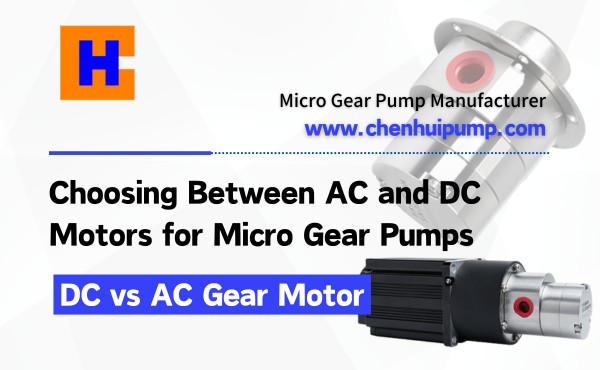External gear pumps are renowned for their exceptional performance and high efficiency in substance transfer applications. Their unique working principle ensures a steady, pulse-free flow, making them ideal for industries that require precision.
These pumps operate with remarkable efficiency, minimizing energy consumption while maintaining reliability. Their robust construction enhances durability, enabling them to handle demanding tasks with minimal maintenance. This combination of cost-effectiveness, smooth operation, and versatility makes them a standout choice for professionals seeking dependable liquid handling solutions.
In industries where fluid transfer precision is critical, these gear pumps are the go-to solution. But what makes them superior to other pump types? This guide delves into their working principle, benefits, and industrial applications to showcase why they’re the preferred option.
What Are External Gear Pumps?
External gear pumps are a type of positive displacement pump that utilizes gears to transfer fluids and are widely employed across various industries, including hydraulics, lubrication systems, and fuel transfer. These pumps are known for their ability to deliver fluids with precision and consistency, making them ideal for applications requiring accuracy and reliability.
They operate using two identical interlocking gears that rotate to create a vacuum, drawing fluid into the pump, which is essential for handling abrasive fluids. As the gears rotate, liquid is sealed between the gear teeth and the inner casing wall. This trapped fluid is then carried around the casing perimeter toward the outlet, ensuring continuous and even discharge. This mechanism ensures a steady, pulse-free flow, making these pumps ideal for applications requiring accuracy and reliability.
The primary purpose of these gear pumps is to handle material transfer tasks across various industries. These pumps excel in managing liquids of different viscosities, from thin solvents to thick oils. Their robust design allows them to perform efficiently in demanding environments, including chemical processing, food production, and hydraulic systems. By delivering consistent performance, they meet the needs of industries requiring durable solutions for abrasive compounds. This pumping solution has precision and durability, which are vital for handling a range of viscous materials.
External Gear Pumps vs. Other Pump Types
These pumps stand out when compared to other pump types due to their unique advantages. Unlike centrifugal pumps, which rely on high-speed rotation to generate flow, they provide a constant flow rate regardless of pressure changes. This makes them more suitable for applications requiring precise emulsion handling.
Compared to diaphragm pumps, gear pumps offer smoother, pulse-free operation. This characteristic is particularly beneficial in processes where maintaining a steady flow is critical. Additionally, their compact design, along with fewer moving components, results in easier maintenance and reduced downtime—advantages not always found in more complex systems like peristaltic pumps..
How Do External Gear Pumps Work? Step-by-Step Process
Step-by-Step Mechanism
These gear pumps operate using a straightforward yet efficient process. Their working principle revolves around two interlocking gears that rotate to move the substance. Here is a step-by-step breakdown of how gear pumps work:
- Fluid Inflow: As the gears begin to rotate, they create a vacuum at the pump’s inlet, which is crucial for handling viscous pourable material. This vacuum draws the flowing material into the pump chamber.
- Fluid Trapping: It’s trapped between the gear teeth and the pump shell. This design ensures no backflow occurs during operation.
- Fluid Transfer: The rotating gears carry the trapped flowable material along the casing barriers toward the outlet. The continuous rotation ensures a steady flow.
- Fluid Discharge: The efficiency of fluid discharge is significantly improved by the pump’s design and clearance. At the outlet, the gears mesh together, forcing the mixture out of the pump. This action maintains consistent pressure and flow throughout the process.
This working principle ensures smooth and pulse-free flow, making these ideal for applications requiring precision and reliability.
External Gear Pump Components and Their Functions
The performance of these pumps relies on their well-designed components, each of which plays a crucial role in ensuring efficient operation, especially in maintaining close tolerances. Below is an overview of the key elements:
- Gears: The two interlocking gears are the heart of the pump. They create the vacuum and transfer the low-viscosity fluid. Their precise design ensures consistent flow and pressure, which is vital for applications involving high tolerance requirements.
- Pump Casing: This encases the gears and provides a sealed environment for element movement. It prevents leaks and supports the pump’s durability.
- Inlet and Outlet Ports: These openings allow emulsion to enter and exit the pump. Their placement ensures smooth flow without interruptions.
- Bearings and Shafts: These components support the gears’ rotation. They enhance the pump’s performance by reducing friction and wear, thereby allowing it to run dry without damage.
The combination of these components ensures the pump operates efficiently, delivering reliable performance across various applications. The working principles of these pumps make them a preferred choice for industries requiring steady and precise hydraulic fluid handling.
Advantages of External Gear Pumps
High Efficiency and Smooth Flow
These gear pumps deliver exceptional performance by ensuring high efficiency in element transfer, making them a type of positive displacement pump. Their design minimizes energy loss, allowing them to operate with remarkable efficiency. The interlocking gears create a steady flow, eliminating pulsations that could disrupt processes. This smooth operation makes them ideal for applications requiring precision, such as chemical dosing or hydraulic systems. By maintaining consistent pressure and flow, these pumps enhance productivity and reduce operational costs.
Durability and Reliability
The robust construction of gear pumps ensures long-lasting performance. Manufacturers use high-quality materials designed to withstand wear and tear, even in demanding environments. The simple design, featuring fewer moving parts, reduces the likelihood of mechanical failure. This reliability makes them a trusted choice for industries handling abrasive or viscous materials, especially when considering internal gear pumps vs. external options. Additionally, their ability to perform consistently under high pressure further highlights their durability.
Versatility Across Applications
These gear pumps excel in a wide range of applications due to their adaptability. They handle substances of varying viscosities, from thin solvents to thick oils, with ease. Their compact design allows them to fit into tight spaces, making them suitable for diverse setups. Industries such as food production, chemical processing, and water treatment benefit from their versatility. Whether transferring corrosive chemicals or delicate food-grade mixtures, these pumps deliver consistent results.
Cost-Effectiveness and Maintenance Ease
These gear pumps offer significant cost advantages, making them a practical choice for industries seeking efficient element transfer solutions. Their simple design reduces manufacturing costs, which translates to affordability for end users. Additionally, their energy-efficient operation minimizes power consumption, further lowering operational expenses over prolonged periods.
One of the standout features of these pumps is their ease of maintenance. With fewer moving parts compared to other pump types, they simplify the process of inspecting and replacing components. Routine maintenance tasks, such as checking for wear or cleaning the pump casing, can be performed quickly without requiring specialized tools. This reduces downtime and ensures uninterrupted operation.
The durability of these pumps also contributes to their cost-effectiveness. High-quality materials, such as stainless steel or corrosion-resistant alloys, enhance their lifespan and ensure better clearance for optimal performance. This durability means fewer replacements and repairs, saving businesses money in the long run. Industries handling abrasive or viscous elements benefit greatly from this reliability, as the pumps can withstand challenging conditions without frequent maintenance.
Another advantage lies in the availability of replacement parts. Manufacturers often design these pumps with standardized components, making it easy to source parts when needed. This accessibility reduces the time and effort required for maintenance, ensuring that operations remain efficient.
By combining affordability, durability, and ease of maintenance, these pumps provide a cost-effective solution for Viscous material handling needs. Their design and performance make them a valuable asset across various industries.
Use Cases & Industries That Rely on External Gear Pumps
Industrial Use Cases
It plays a vital role in numerous industrial applications. Their ability to handle a wide range of substances makes them indispensable in industries such as chemical processing, food production, and pharmaceuticals. These pumps excel in pourable material transfer tasks that demand precision and reliability. For example, internal gear pumps can also be used in similar applications. In chemical processing, they efficiently transfer corrosive or hazardous mixtures without compromising safety. Their robust construction ensures durability, even in challenging environments.
In the food and beverage industry, these pumps are favored for handling solid particles without compromising efficiency. Gear pumps are often used to transfer viscous solutions like syrups, oils, and sauces. Their smooth operation prevents contamination, ensuring the integrity of the food-grade solution. Similarly, in the pharmaceutical sector, these pumps handle sensitive mixtures with care, ensuring minimal disruption to the viscous fluids, maintaining sterility and precision during transfer. Their compact design and adaptability make them suitable for diverse setups, from large-scale manufacturing plants to smaller production units.
Industries requiring consistent performance under varying conditions benefit greatly from these pumps. Their ability to maintain steady flow rates, regardless of pressure changes, ensures uninterrupted operations. This reliability has solidified their position in the gear pumps market, where demand for efficient and versatile solutions continues to grow.
Scenarios Requiring High-Pressure and Viscosity Handling
These pumps are particularly effective in scenarios that demand high-pressure handling or the transfer of viscous solutions. Their design allows them to operate efficiently under high-pressure conditions, making them ideal for hydraulic systems and other demanding applications. These pumps maintain consistent flow and pressure, ensuring optimal performance even in the most challenging environments.
When dealing with viscous substances, such as heavy oils or adhesives, external gear pumps demonstrate exceptional capability. Their two identical interlocking gears create a strong suction force, enabling them to handle abrasive fluids effectively. transfer thick liquids without difficulty. This feature is especially valuable in industries like petrochemicals, where handling high-viscosity substances is a common requirement.
The pumps’ ability to handle both high pressure and viscosity makes them versatile tools in industrial applications. They are often used in processes that require precise liquid transfer, such as dosing chemicals in water treatment plants or transferring lubricants in automotive manufacturing. Their reliability and efficiency make them a preferred choice for industries seeking robust and adaptable solutions.
Conclusion
External gear pumps provide a dependable solution for viscous liquid transfer, especially when precise metering is required. Their efficient design ensures consistent performance and close tolerances, making them suitable for various industries, particularly in gear pumps vs. other types. These pumps handle substances of different viscosities with precision, offering smooth and pulse-free operation. Their robust construction enhances durability, reducing maintenance needs. Industries benefit from their versatility, as these pumps adapt to diverse applications. Choosing the right pump for specific tasks ensures optimal results. External gear pumps remain a popular choice, especially when compared to internal gear pumps, and are a preferred option for professionals seeking reliability and efficiency in liquid handling.









